How to Grow Tomatoes Indoors Hydroponically? Expert’s Advice
by Lee Safin
In the late 1600s, tomatoes started travelling from the Andes. Although it was considered an ornamental food in Europe for several centuries, this crop has become a favourite worldwide and can now be found in every grocery, market, restaurant.
Along with potatoes, eggplants, and bell peppers, tomatoes are a member of the Nightshade family, and these fruits come in various colours like red, yellow, green, pink, orange, etc.
Their popularity due to the sweet, tangy to smokey flavour makes a huge deal for being a favourite crop worldwide. Even though tomatoes are hugely popular and very easy to find, consumers find it a little difficult to choose a good quality tomato.
For this reason, while selecting a proper method of crop cultivation, you need to know about certain factors like pH, temperature, humidity, etc.
In this article, we will follow up on “How to Grow Tomatoes Indoors from seeds?”
Furthermore, we can entitle the whole chapter as “How to Grow Tomatoes Indoors hydroponically?”
If you are excited to know more about how to grow tomatoes indoors with lights, then check the linked article. Moreover, to know more about growing tomatoes with artificial lights, check the linked article.
Contents
- Several Cultivation Styles
- Bush Variety
- Vining Variety
- Problems With Tomato Culture And Troubleshooting
- What is Hydroponics?
- How to Grow Tomatoes Indoors Hydroponically?
- STEP 1 – Setting Up The System
- STEP 2 – Growing The Tomatoes
- STEP 3 – Creating Growth Environment
- What Are The Pros and Cons of Hydroponics System?
- Wrapping Up

Several Cultivation Styles
The book can not replace anything! right? So there are a lot of books on the hydroponic system but are all of them valid? Let us help you, to dig deep enough this book is enough.
So let’s continue.
The cultivation technique of tomatoes is straightforward, just like their abundance. There are two varieties of the cultivation technique.
Bush Variety
These varieties are tough to manage. These are well cultured in the greenhouse floor, which has a tendency to sprawl and makes it difficult to grow in a trellis. Hence, the cultivators find it difficult to reach the fruits or prune the plants or navigate the greenhouse.
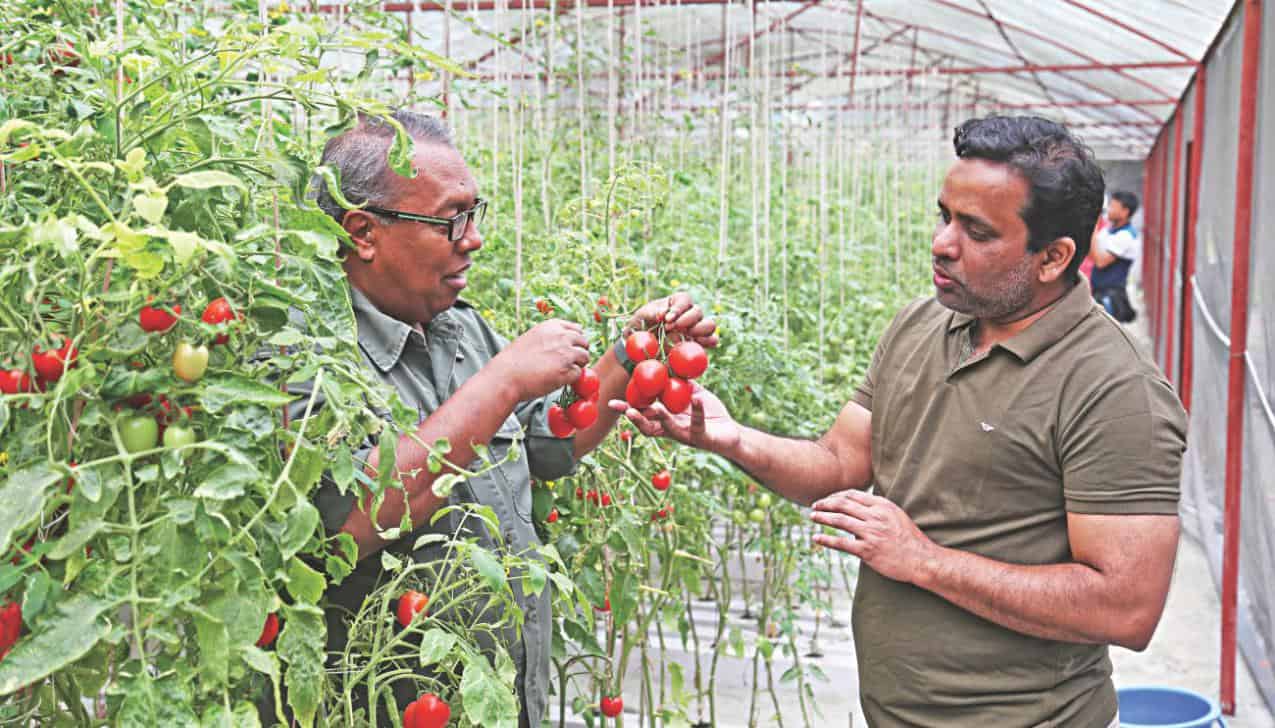
Vining Variety
These varieties are preferred over the bush varieties because they can be clipped to a leader and can be trellised using a leaner and lower system. This method is much faster to cultivate and easier as well.
As fruiting crops, tomatoes hog all types of nutrients, and for this, proper conditions should be maintained like- Electrical Conductivity, pH range, temperature, etc.
Problems With Tomato Culture And Troubleshooting
The problem with tomato culture is that these fruits are very vulnerable to a broad range of pests like a mosaic virus or diseases like spider mites and aphid or fungal attacks of fusarium wilt verticillium.
For this reason, while buying the seeds, make sure to read the “VFN” label properly. This label depicts the level of resistance of these crops towards foreign pests or fungicides.
To avoid this disease progression, hydroponic methods of tomato culture are very effective.
While choosing a crop set, you need to check crops with overlying EC, Ph, and temperature preferences. To grow tomatoes hydroponically, these are the factors that should be chosen with optimum evaluation.
If you need hydroponics kits, click here and see what you can get.
What is Hydroponics?
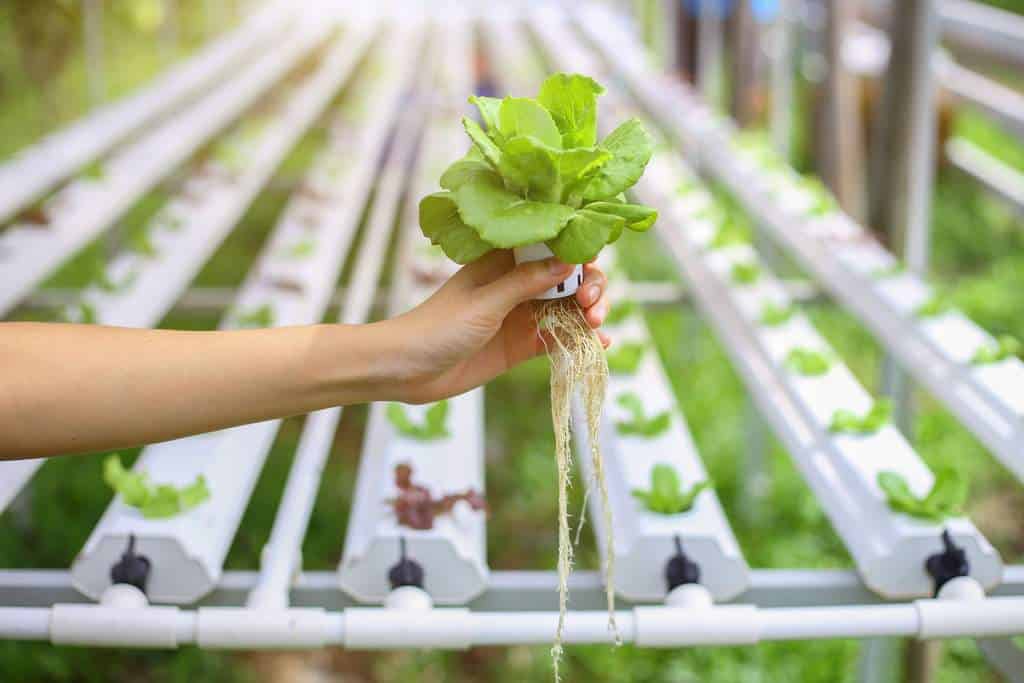
Hydroponic gardening is a straightforward way of growing crops without additional soil or any substrate related to soil.
The amount of manual labour involved is also very less as compared to conventional methods. In this way of gardening, a concentrated solution of nutrients and minerals is applied directly to the plants’ roots.
Light-weighted plants like tomato plants grow their roots in the solution directly.
How to Grow Tomatoes Indoors Hydroponically?
This technique is based upon the fact no soil is required, and tomatoes are grown in a hydroponic solution where the crops are placed in a non-soil medium.
Here the roots are given support, and these can suck up the nutrients from the medium.
This allows the tomatoes to grow in a sustained environment with a less chance of being affected by diseases, grow faster, and yield juicy and fleshy fruits, which are very tasty.
If you want to know how to grow tomatoes indoors hydroponically, please follow the procedures mentioned below.
STEP 1 – Setting Up The System
Type of The System
There are different varieties of hydroponics systems, and in any of the systems, tomatoes grow very abundantly. Out of these systems, the ebb and flow system is the easiest and cheapest and a great option for cultivating tomatoes.
This is also known as the flood and drain system because it floods the plants with a nutrient solution from which it drains when it is only two inches from the top of the vessel.
You can buy a kit that contains all the necessary equipment for the ebb and flow cultivation in any hydroponics store. You can also purchase separate components and set them up. We found out the best hydroponic system kit for you. Check it out.
But before setting up, clean everything very thoroughly.
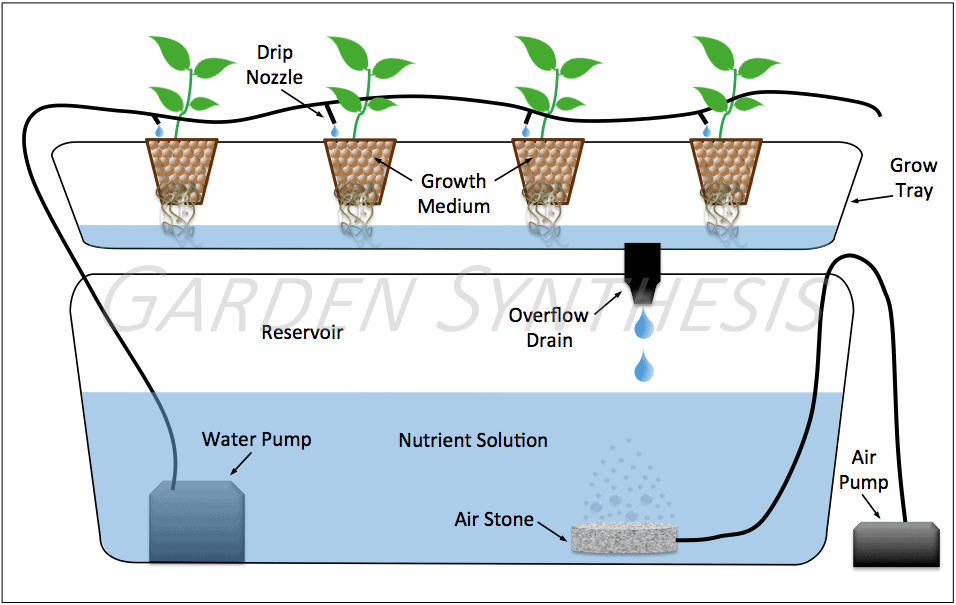
Some alternative methods are-
Deepwater Culture
Used to cultivate cherry tomatoes.
Multi-Flow
A large version of ebb and flow that relies on gravity.
Nutrient Film Technique or NFT
This method is a little more fastidious and expensive but preferred when grown commercially.
Suitable Location
Hydroponic systems are required to be controlled and grown in a sustained environment to function properly, and this can only occur indoors or in a greenhouse. These should be stored in a closed room away from the outside, which allows you to regulate the temperate and set the humidity at an accurate level needed for the best growth. It is possible to grow these tomatoes using natural light, but the system should be kept under a glass covering like a greenhouse roof that isn’t open to the air.
Using a Reservoir
A plastic container should be used, preventing algae’s growth by restricting the light from the environment. The large reservoir provides a stable and successful hydroponic system. For this purpose, you can use a bucket or a trash can. This should be lightly scrubbed with soapy water and rinsed thoroughly to prevent contamination. Rainwater is better suited than tap water which has the possibility of being hard.
However, we shortlisted the best hydroponics reservoirs for you. Check it out.
Fixing a Tray
The tray will work as a support to your tomato plants, where it will periodically flood them with sufficient nutrients and water that the tomato roots will absorb. Place the reservoir higher to allow the excess amount of water to be drained down, but it should be sturdy to hold up your plants. These trays are built of plastics but not metal which might corrode and affect the plants.
Pump Installation
Purchase a water pump at a store of hydroponics, or you can also use a fountain pump. It would help if you found a strong enough pump to send water from the reservoir to the tray that contains the plants. This pump needs to be powerful and adjustable with the settings you have done for the system.
Hei! we got the best one here. Do you want to see it?
Check our latest article on the best water pump for hydroponics, you will get the gem.
Installation Of Fill Tubing
A fill tubing is required to be placed between the reservoir and the tray. Use a half-inch PVC tube between the pump and the tray, which can be flooded to the level of the tomato roots. Don’t forget to position the pipes on the opposite side of the tray to provide water circulation.
Overflow Leading Back To Reservior
Join another PVC tube to the tray with an overflow fitting placed at a level in the roots’ bottom. When the water comes to the same level, it will drain back through the tube and then into the reservoir. The overflow tube must be larger in diameter than the inlet tube of the pump to avoid flooding.
Attachment of Timer
An adjustment should be set to increase or decrease the number of nutrients provided to the plant’s life. A heavy-duty timer with a waterproof cover is preferred. If you face any trouble, then ask the manufacturer.
Testing The System
To test the system, first, you need to turn on the pump and check if the water goes. Adjust the tray if there is any excess water. When you have set the water to correct strength, check the timer if the pump is set at specific times.
STEP 2 – Growing The Tomatoes
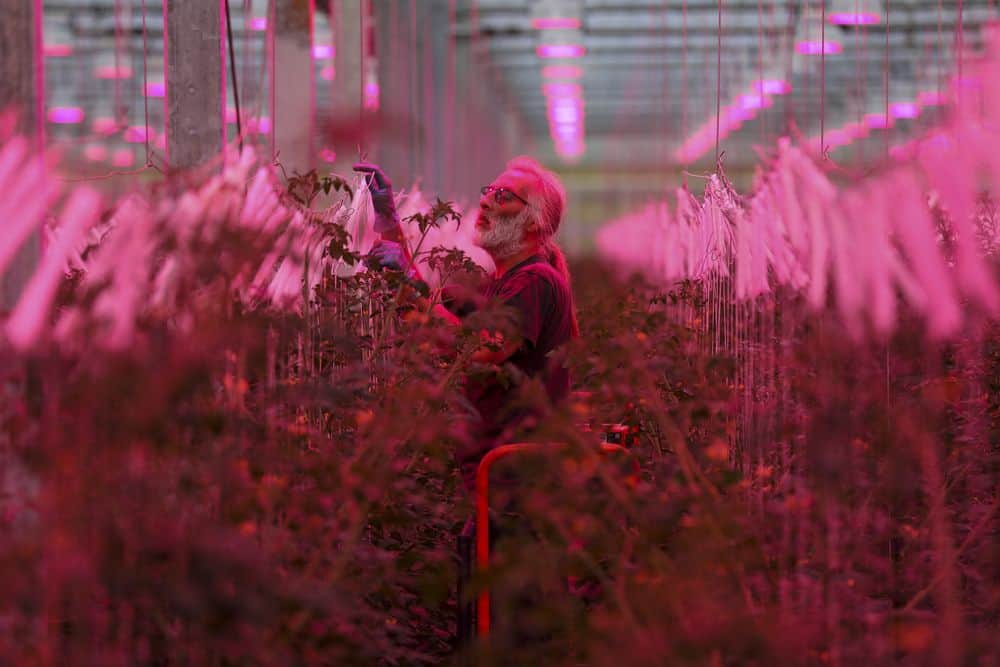
Special Medium
It would help if you planted your seeds in a nursery tray with special growth medium types except for ordinary soil for optimum crop culture. The notable growing materials are-
Introduction of Artificial Light
Once the plant’s sprout, get rid of the covering and put the seedlings under a light source for at least 12 hours a day. The incandescent light source should be considered as the last option. Make sure not to allow the light to shine on the roots because it can cause damage. To know more about growing tomatoes with artificial lights, check the linked article.
However, if you are interested to check the best hydroponic lights for your plant, then check our latest article. We found out the best of the bests.
Move Seedlings Into The System
Wait till the first leaf is produced, and the roots start to penetrate from the tray bottom. This process usually takes ten to fourteen days. In the ebb and flow system, you can place it in the tray, but for another system, the crops need to be set in a rack along a specific slope so that the roots can suck up the nutrients.
Water Pump Timer
The timer should be set for 30 minutes every 2.5 hrs. The plants are required to be monitored meticulously, and water frequency should be regulated.
Setting Artificial Lights
The tomatoes are needed to be exposed to optimum conditions like artificial light for effective yield. After keeping them for 16 hours (12 being minimum), turn it odd and let these sit in darkness for the rest of the time. The plants will grow at a slower pace if you rely on sunlight.
Pruning of Tall Plants
Staking and pruning are very important for the better growth of plants. If your plants grow indefinitely, stake out the larger stems, and even for determinate plants, prune the plants, or else there might be a risk of lower yields.
Pollination of Tomato Plant Blossoms
Since there are no insects for pollination, you need to do it. When the petals are exposed to pollens, use a paintbrush, dust it off gently, and repeat it every day.
STEP 3 – Creating Growth Environment
Temperature Control
The required temperature for optimum growth is 18 to 24 degrees Celsius in the morning and 12.8 to 18.3 degrees Celsius at night. The temperature should be monitored regularly as it impacts the tomatoes’ life cycle. Proper attention is required to regulate the temperature of the growth solution.
Running a Fan
An exhauster fan is very effective in controlling an even temperature throughout the room. This airflow also contributes to pollination.
Addition of Nutrient Solution
A special type of solution is prepared for this hydroponic system. Avoid organic solutions which have a good chance of decomposing. Focus on a growth focus formula at first and then switch to a bloom formula.
pH Test
The appropriate pH range is 5.8 to 6.3 for optimum yield. It can be adjusted using acidic or basic solutions to the reservoir.
Installation of Growth Lights
Artificial lights can increase your yield, which allows you to induce an ideal growth condition. Metal halide lamps are the ideal option because they can stimulate sunlight accurately. Other available lights are fluorescent, LED, or sodium lights.
If you are interested, you can check our latest article on the best LED grow light.
Regular Monitoring
EC meter or Electrical Conductivity meter is necessary to measure the concentration of nutrients in the water, which effectively monitors the whole process.
Changing Water And Nutrient Solution Regularly
If the water level drops, you can add more water but don’t add more nutrients. If your plants don’t look healthy enough, empty the whole reservoir, rinse a support material, fill it with water and new nutrients and make sure to balance the pH and monitor the process again.
This is all about how to grow tomatoes hydroponically. If you are excited to know more about how to grow tomatoes indoors with lights, then check the linked article.
What Are The Pros and Cons of Hydroponics System?
Like any other method, there are many costs and benefits to growing crops hydroponically.
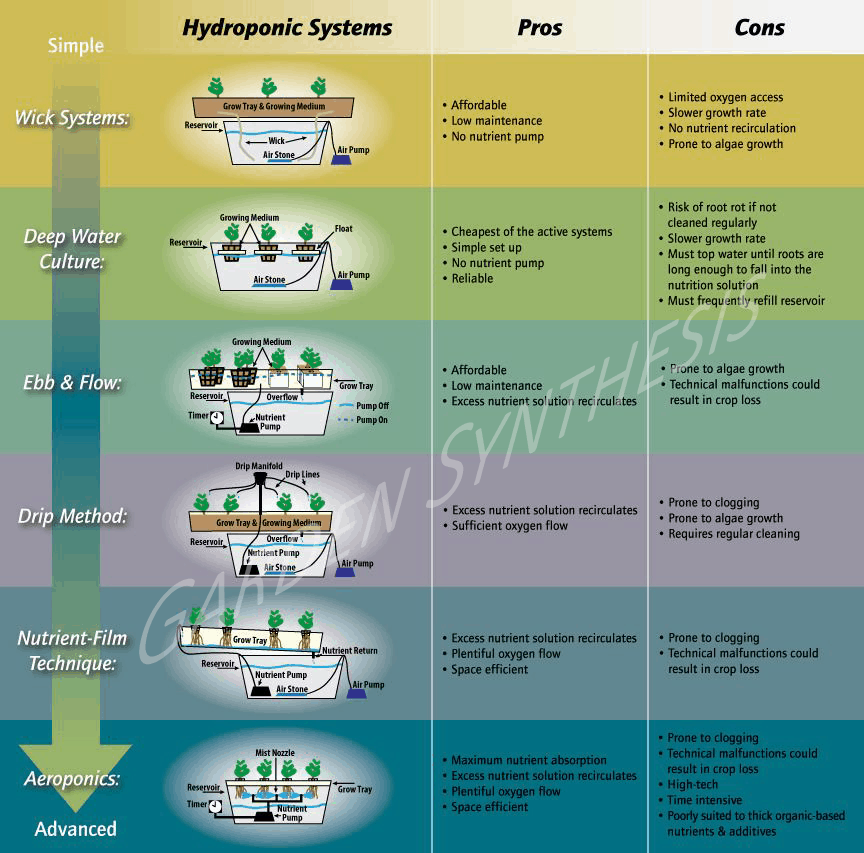
Pros
High Growth Rate
The rate of plant growth exceeds by almost 30-50% when grown hydroponically instead of when they are grown traditionally using soil. This is because the optimum conditions required for their growth are provided.
Greater Production Yield
The favourable conditions guarantee an almost three to ten times higher production yield than normal methods.
Growth Is Cleaner
Since there is no soil involvement, it is much tidier and easy to manage growing tomatoes, especially at home. It is less messy and way more sanitary.
The Flexibility of Season
Since the conditions can be controlled artificially, these plants can be grown at any time of the year at all seasons.
More Water-Efficient
This method is approximately 90% more efficient in conserving water than normal soil methods.
Location
Since they can be grown almost anywhere and do not require soil, they save many lands.
Cons
Investment
This is a way more costly method of growing plants as the system setup costs more.
The Lesser Margin For Error
The pH, concentration of nutrients, water content, everything has to be kept at an optimum. The slightest change could result in a failed crop yield.
Wrapping Up
So, now I hope you got your answers about “how to grow tomatoes indoors hydroponically?” However, the main objective should not be “how to grow tomatoes hydroponically?”, the objective should be “how to grow tomatoes indoors from seeds hydroponically.”
If you have any more queries you can contact us via email. Our professionals can help you. If you are excited to know more about how to grow tomatoes indoors with lights, then check the linked article. Moreover, to know more about growing tomatoes with artificial lights, check the linked article.
 |
 |
 |
 |

About Lee Safin
Lee Safin was born near Sacramento, California on a prune growing farm. His parents were immigrants from Russia who had fled the Bolshevik Revolution. They were determined to give their children a better life than they had known. Education was the key for Lee and his siblings, so they could make their own way in the world. Lee attended five universities, where he studied plant sciences and soil technologies. He also has many years of experience in the U.S. Department of Agriculture as a commercial fertilizer formulator.
Thoughts on "How to Grow Tomatoes Indoors Hydroponically? Expert’s Advice"
 |
 |
 |
 |
Get FREE Gardening Gifts now. Or latest free toolsets from our best collections.
Disable Ad block to get all the secrets. Once done, hit any button below
 |
 |
 |
 |